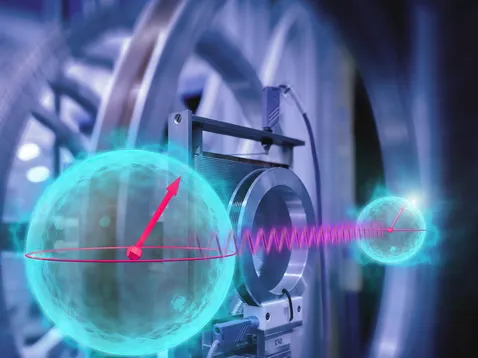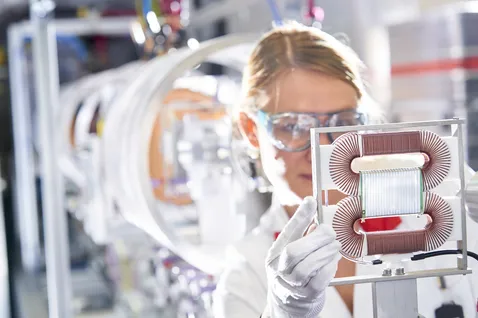News
Unlocking quantum secrets with entangled neutrons
Wissenschaft, RESEDA |
While quantum entanglement—recognized with the 2022 Nobel Prize in Physics—has paved the way for ultra-secure communications and advanced computing, its significance extends far beyond quantum information technology, reaching deep into the foundations of condensed matter physics and beyond.
Quantum entanglement in condensed matter physics
Quantum spin liquids, for example, possess a quantum entangled ground state—the system’s lowest-energy configuration, which it adopts as it approaches absolute zero. However, demonstrating the existence of such a state remains an experimental challenge pursued by researchers worldwide.
Neutrons to explore entangled states
Neutron spectroscopy has been a vital tool in this pursuit, enabling researchers to probe a material's excitation spectrum for signs of entanglement. Recently, a global team of researchers demonstrated progress by showing that a neutron resonance spin-echo spectrometer—such as RESEDA at the MLZ—can produce a beam of entangled neutrons.
An entangled beam of neutrons opens new possibilities for probing condensed matter systems, providing a powerful tool to explore quantum entanglement.
Original publication:
J.C. Leiner, S.J. Kuhn, S. McKay, J.K. Jochum, F. Li, A.A.M. Irfan, F. Funama, D. Mettus, L. Beddrich, C. Franz, J.Shen, S.R. Parnell, R.M. Dalgliesh, M. Loyd, N. Geerits, G. Ortiz, C. Pfleiderer, R. Pynn. Spin-energy entanglement of a time-focused neutron, Phys. Rev. Applied 22, L031005 (2024), DOI: https://doi.org/10.1103/PhysRevApplied.22.L031005
More information:
In addition to the scientists at the MLZ, researchers from the following institutions contributed to the study:
- the Highflux Reactor, Oak Ridge National Laboratory, USA,
- Indiana University, USA,
- the University of Waterloo, Canada,
- the Paul Scherrer Institute, Switzerland,
- Delft University of Technology, Netherlands,
- the Rutherford Appleton Laboratory, United Kingdom,
- Vienna University of Technology, Austria,
- the Institute for Advanced Study in Princeton, USA,
- the Center for Quantum Engineering (ZQE),
- the Munich Center for Quantum Science and Technology (MCQST)
- and the School of Natural Sciences at the Technical University of Munich (TUM).

